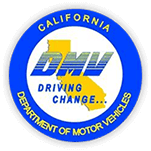In California, drivers who are convicted of driving under the influence (DUI) face a number of severe consequences, including being required to have an ignition interlock device installed on their vehicles. The purpose of these devices is to prevent drivers from operating a motor vehicle when they have a measurable amount of alcohol in their systems. 
DUI offenders in California can take advantage of having an ignition interlock device installed on their vehicles as an alternative to having their driver’s licenses suspended. Ignition interlock devices are a good alternative for those facing full license suspensions. Experienced California DUI defense attorneys should review their cases carefully in order to determine if such an alternative would be in their clients’ best interests.
How Ignition Interlock Devices Work
Ignition interlock devices are sophisticated mechanisms that are attached to a vehicle’s ignition. The driver of the vehicle is required to blow into the device in order for the vehicle to start. If the sample contains more than a predetermined amount of alcohol (typically .02% – .04%) in the breath, then the device locks the vehicle’s ignition, preventing it from starting. The ignition interlock device is installed into a vehicle’s steering column and then sealed with tamper-proof tape. Drivers are instructed on how to use the device using a specific breathing technique, which was devised to help deter others from helping a convicted California DUI offender start his or her vehicle. In California, it is a criminal offense to blow into the device to start the vehicle for another driver or to tamper with the device in any way.
The ignition interlock device operates very much the same as a breathalyzer; the driver breathes air into a collection tube and the device then measures the amount of blood-alcohol content (BAC) in the person’s system. Some devices are set to allow low BAC levels that are well below California’s legal limit of .08%, while most devices will not even allow the vehicle to start if any alcohol is detected. Once an alcohol-free sample is provided, the vehicle will start; however, some devices conduct what are known as “rolling tests” every five to 20 minutes in order for the engine to continue running. Rolling tests require that the California drunk driver blow into the tube intermittently while driving as a preventative measure to insure that someone else did not blow into the tube just to start the vehicle.
Ignition interlock device manufactures have created safeguards to insure the device’s effectiveness and help prevent tampering. In addition to installing shrink tape that will reflect any tampering attempts, the device actually makes a record of any attempts to tamper with it. Additionally, ignition interlock devices do keep a record of each time someone blows into the tube and any attempts by the user to bypass the device’s safeguards.










